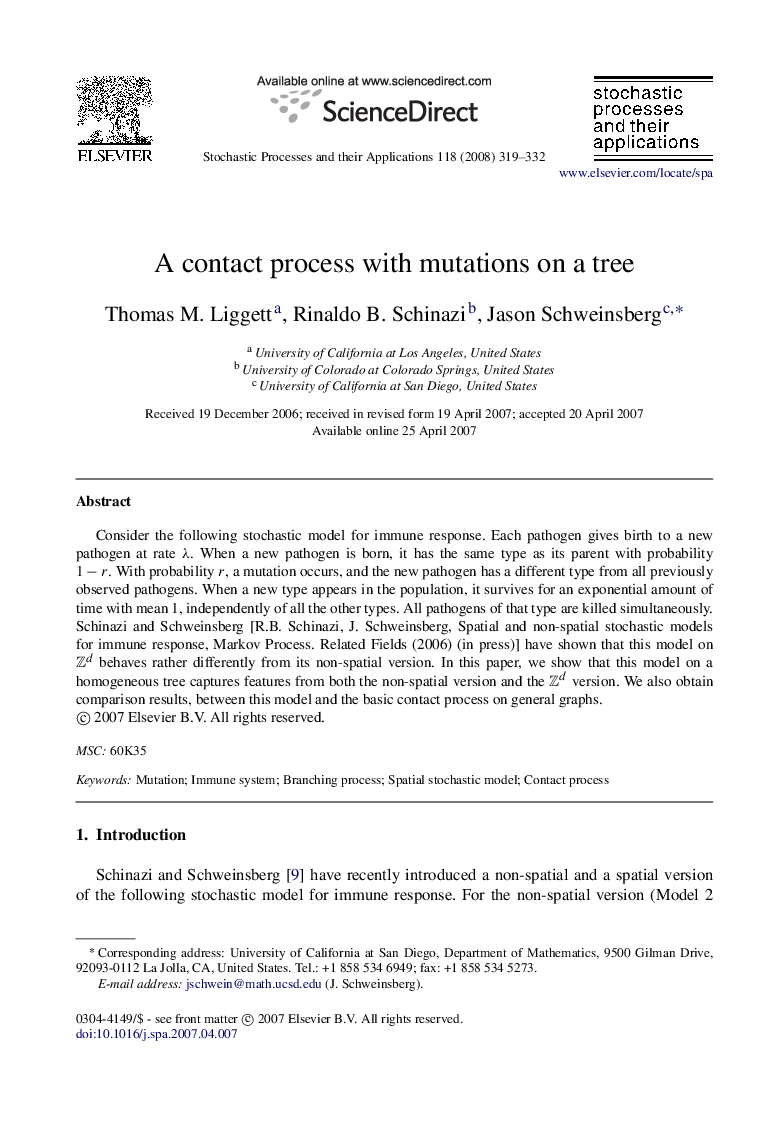| Article ID | Journal | Published Year | Pages | File Type |
|---|---|---|---|---|
| 1156977 | Stochastic Processes and their Applications | 2008 | 14 Pages |
Consider the following stochastic model for immune response. Each pathogen gives birth to a new pathogen at rate λλ. When a new pathogen is born, it has the same type as its parent with probability 1−r1−r. With probability rr, a mutation occurs, and the new pathogen has a different type from all previously observed pathogens. When a new type appears in the population, it survives for an exponential amount of time with mean 1, independently of all the other types. All pathogens of that type are killed simultaneously. Schinazi and Schweinsberg [R.B. Schinazi, J. Schweinsberg, Spatial and non-spatial stochastic models for immune response, Markov Process. Related Fields (2006) (in press)] have shown that this model on ZdZd behaves rather differently from its non-spatial version. In this paper, we show that this model on a homogeneous tree captures features from both the non-spatial version and the ZdZd version. We also obtain comparison results, between this model and the basic contact process on general graphs.
